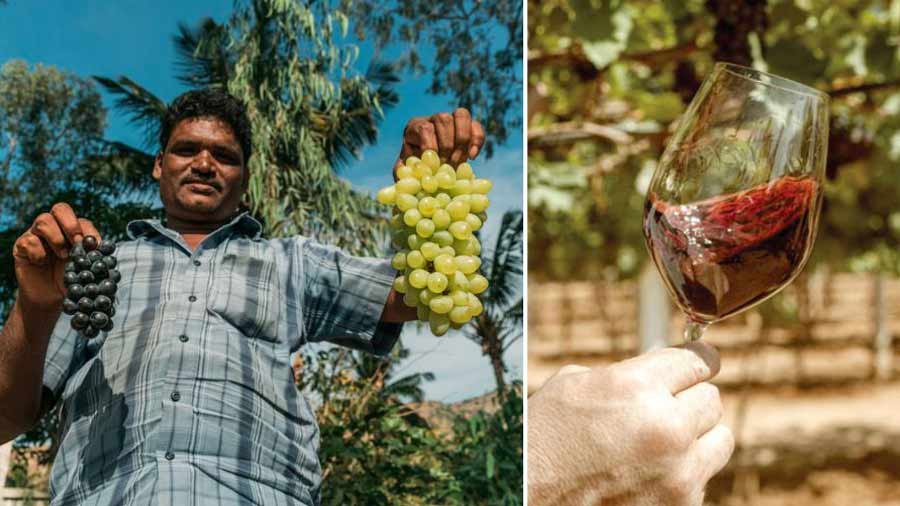I am walking through a wine cellar that feels more like a cathedral — gargantuan, darkened, with vaulted ceilings and floors made of albero, a sandy clay material also used in bullrings which can be sprinkled with water to promote more humidity. I am not surprised when I hear that the cellars here are ‘wine cathedrals’ and they actually look like that, and store as many as 25,000 bottles of ‘wine’. I am in a winery in Jerez de Frontera in Spain’s Andalusia region, considered the birthplace of sherry.
An old-world wine
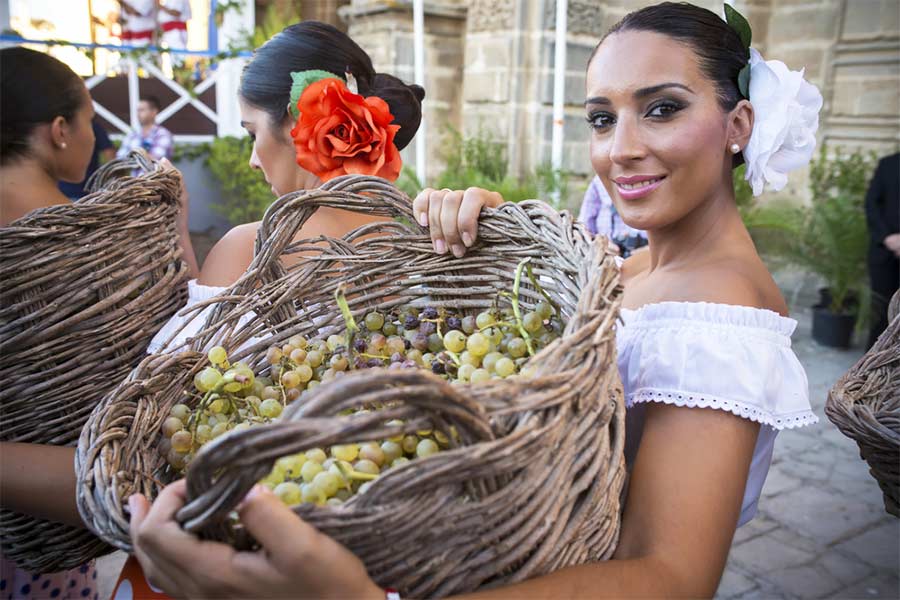
Scenes from the traditional grape stomping ceremony at the harvest time festival in Jerez Shutterstock
Sherry is one of the oldest wines in the world, and has a rich history of 3,000 years. It is said that the Phoenicians, the intrepid eastern Mediterranean seafarers, introduced winemaking to the Iberian Peninsula around 1100 BC. It was being made during the time of Moorish occupation of Andalusia until 1231. The word sherry is an anglicisation of jerez, and is a fortified wine made from white grapes that are grown near the city of Jerez de la Frontera, primarily Palomino grape, which are named after a 13th-century Spanish knight. An important trading post in Roman times, Jerez was later conquered by the Visigoths and the Moors.
The region’s chalky white soil, called albariza, has marine sediments — limestone and prehistoric sea fossils — that can retain water, even in the hottest months. The special southwestern Spanish soil along with a climate that has 300 days of sunshine annually, are the key elements of the terroir which creates sherry’s special flavours.

Southwest Spain and Andalusia's albariza soil and balmy climate is perfect to grow Palomino grapes, which is primaily used to make sherry Shutterstock
The wine can be called Jerez if it is from the Sherry Triangle, which consists of coastal towns El Puerto de Santa María and Sanlúcar de Barrameda along with Jerez de la Frontera. This wine slowly spread around the world and became famous. By the time of Spanish colonisation of the Americas, sherry casks were often used as ballast on ships to the New World. The story is that in 1587, English explorer Sir Francis Drake plundered the Spanish port city of Cádiz and carried away 3,000 barrels of sherry in his ship, and the British enjoyed it so much that they began importing it!
Winery meets history
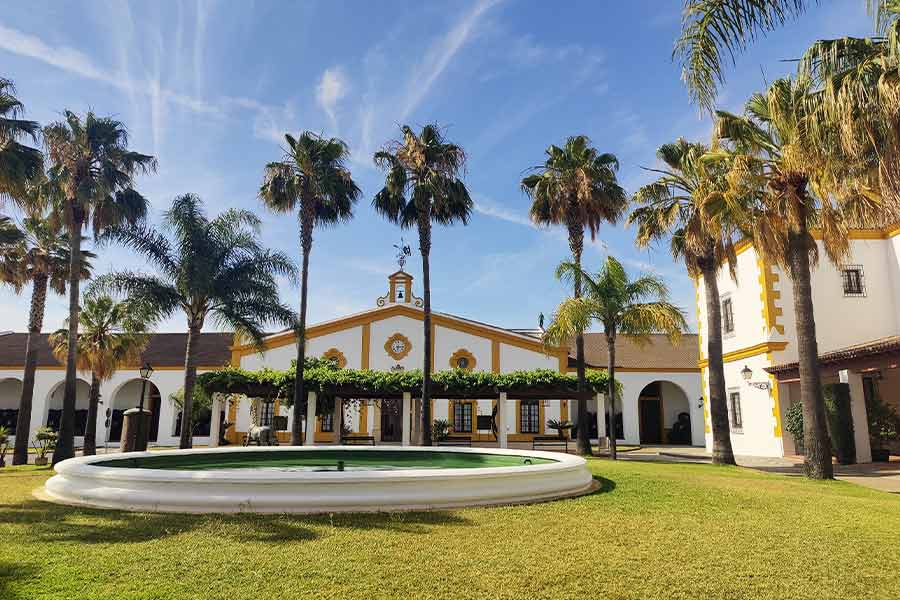
The Bodegas Real Tesoro, a boutique winery in the Santiago Quarter of Jerez, is housed in a traditional old-school estate style property Kalpana Sunder
“Jerez has three important pillars — Andalusian horses, sherry and flamenco,” was our tour guide Trinidad Blanco Martinez’s introduction. In Andalusia, sherry is consumed during the annual ferias (city carnivals) and as an accompaniment to any meal. A sherry-tasting experience and winery tour should be on your list of things to do when visiting this region in southern Spain.
We visited the Bodegas Real Tesoro, a boutique winery in the Santiago Quarter of the city, which specialises in very old sherries known as VOS and VORS. The winery’s old-style buildings with high ceilings and slanted tile roofs, not only houses the sherry making operation, but also has art collections and an extensive stable with Andalusian horses. It is also a sought-after venue for weddings and parties.

A set of prints from Picasso's famous series between 1930 and 1937 are displayed at the winery's art gallery, while (right) the entire proerty is accented with antiques Kalpana Sunder
It was in 1998 that Joaquin Rivero acquired an old building in Jerez and wanted to recover his family’s old links with winemaking. The building is furnished with antiques and tapestries from the 17th and 18th centuries. Today, Rivero’s daughter Helena looks after the winery. In 2005, they also opened an art gallery. The Joaquín Rivero collection comprises paintings from the 15th through the 19th centuries, including noteworthy works by Spanish painters Diego Velázquez, Francisco Goya and Greek artist El Greco.
Vine to wine
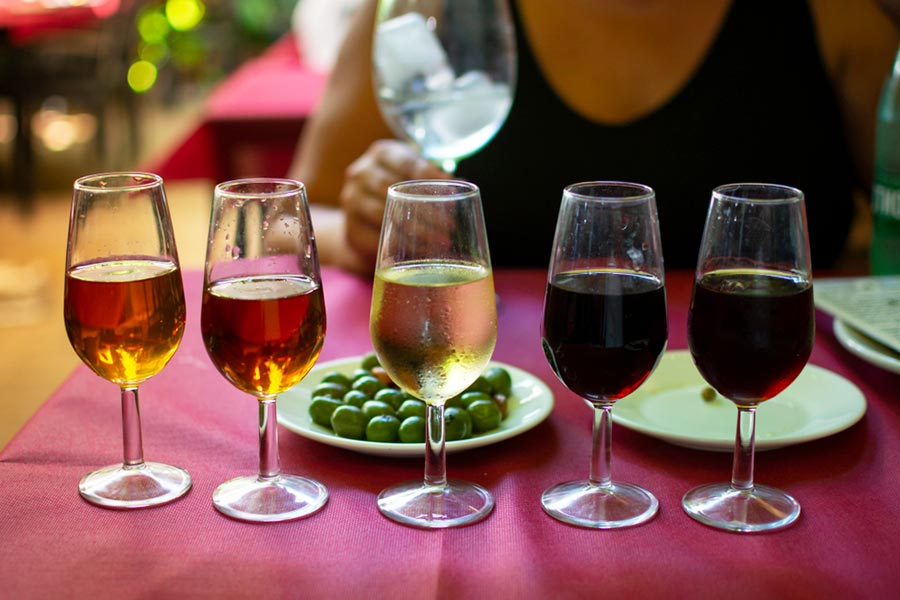
There are different variations of sherry — fromt he light coloured, dry Finos or Manzanilla to the darker, full bodies and sweeter Oloroso and Pedro Ximénez Shutterstock
Sherry is a drink produced in a variety of styles, ranging from light versions that’s similar to white table wines to darker ones, with flavours of chocolate, raisin and prune. Sweet dessert wines are also made from Pedro Ximénez or Moscatel grapes.
Carmen Garcia was our guide who took us on a tour, explaining the process of making sherry. The grapes are harvested in early September and then crushed. After that, it goes into steel tanks for the first fermentation, after which a grape spirit called destilado is added to increase the final alcohol content.
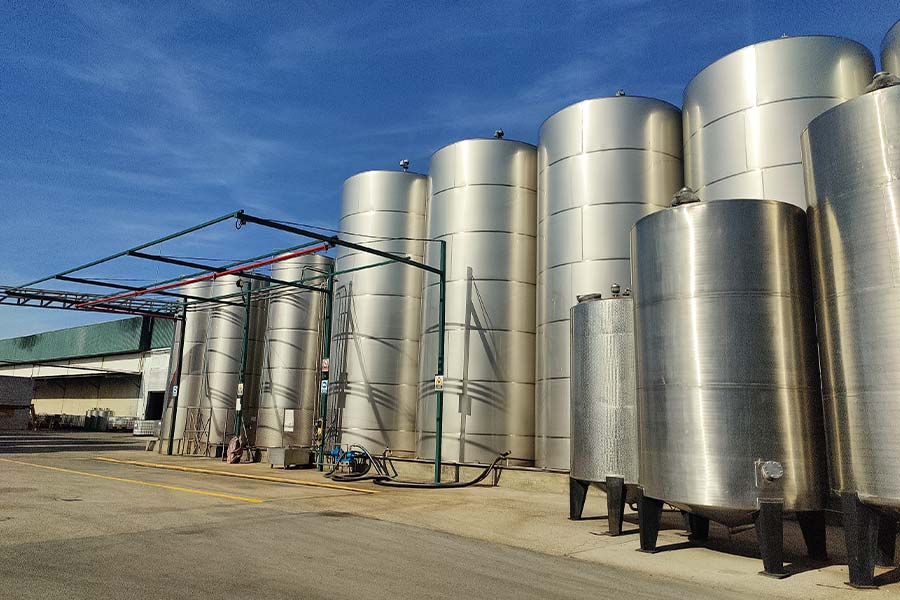
The steel tanks where the grapes are fermented Kalpana Sunder
We walked through the dark vaulted caves with rows and rows of American oak barrels stacked up to the rafters. Our guide explained how they separate the sherry into batches. As they age in a barrel, they develop a layer of flor — a yeast-like growth that helps protect the wine from excessive oxidation. This stage produces a sherry that is closest to white wine — distinctively dry and crisp — known as Finos. Another dry and white variety, the Manzanilla, has slightly different notes thanks to geography. The Manzanilla owes its delicateness and salty touch to the sea wind of Sanlúcar de Barrameda. The Oloroso, on the other hand, ages in direct contact with air, because the alcohol added during fermentation is too high for the yeast cells to remain alive. With its pungent smell, Oloroso is the strongest type of sherry, with about 20 per cent alcohol content.
Pedro Ximénez is a super sweet sherry with hints of dried fruits, molasses, chocolate and spice, which pairs well with cheese. These grapes get dried in the sun for about a week until they look like raisins, which helps increase the sugar content — almost 500gm in a litre of sherry wine. This also has a high alcohol content of 15 to 22 per cent.

Rows of American oak barrels used to store the sherry Kalpana Sunder
Carmen also explained the solera system devised centuries ago, which involves introducing younger wines to older wines, so that the younger acquires some of the character of the older one. This blends wines from different years before bottling so that bottles of sherry will be of uniform and consistent quality.
The bottom row of barrels is called solera and the others are called criaderas. The first criadera has the youngest wine and the solera has the oldest. When the sherry is bottled it is extracted from the bottom row, and the wine above replaces the amount that is taken out. By law, only up to 30 per cent of the sherry is allowed to be removed from the solera barrels.
Wine, with a pairing of art and horses
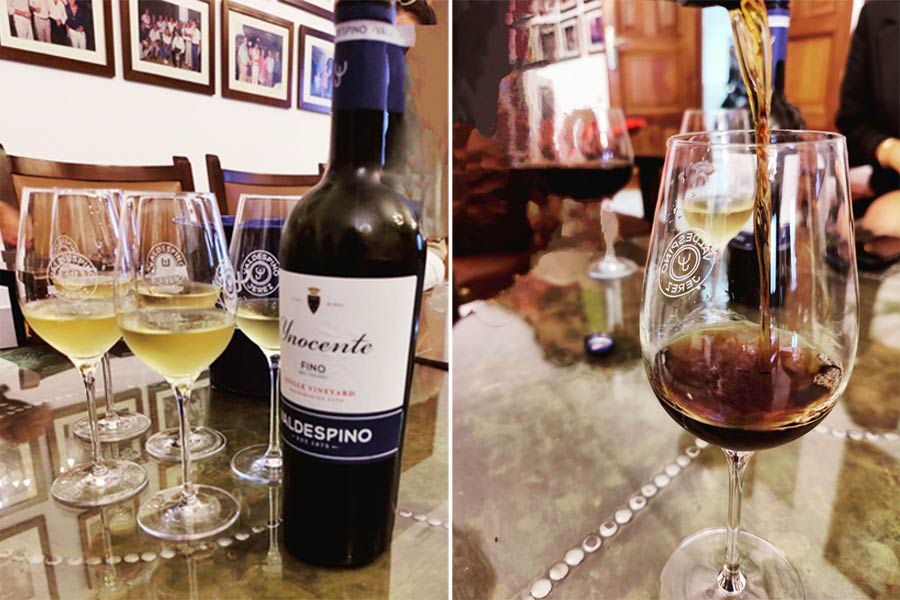
Tasting the light coloured, white wine-like Finos and the darker Oloroso Kalpana Sunder
After a tour of the winery, we experienced a different kind of feast. The Rivero family has immense collections of art and we visited the galleries lined with over than 300 works of art by Spanish greats, as well as the Suite Vollard that has the prints of 100 etchings in the neoclassical style by the Spanish artist Pablo Picasso, produced from 1930 to 1937.
After touring the wineries and art galleries we visited their stables, where the Andalusian horses named after their sherries reside. The family also has a collection of vintage carriages, displayed along with riding gear and harnesses.

The winery also has a stable of Andalusian horses named after their sherries, and a collection of old carriages and riding gear Kalpana Sunder
The visit ended pleasurably with a wine tasting in the grand Piano room, surrounded by artwork and sepia images from the past, where we tasted some of their best sherries. We learned that the colour can give you an idea of the style and age of the sherry. Manzanilla and Fino tend to be pale straw-like in colour, while Oloroso, Cream, and Pedro Ximénez are often deep mahogany. We wrapped up the heady afternoon of sherry, art and horses, with my favourite wine — the sweet dessert wine Pedro Ximénez.


